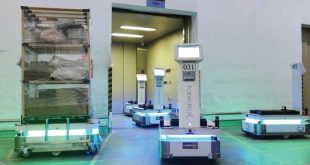Introduction
The HACCP program is a systematic approach to the identification, evaluation, and control of food safety hazards. It is a regulatory requirement for many areas of food processing, including meat (FSIS), poultry (FSIS), egg products (FSIS), seafood (FDA), and juice processing (FDA). There are HACCP requirements that are unique for each food process.
The unique requirements are dictated by the responsible regulatory agency. From a scientific perspective, the HACCP program is a proactive approach to food safety and is based on seven principles
These principles when combined form a flexible food safety program that is adjustable as processing conditions change. The goal of the HACCP program is to eliminate, control, and/or prevent food safety hazards at the processing plant with the ultimate goal of protecting the consumer.
Prerequisite programs
The production of safe food products requires that the HACCP system be built upon a solid foundation of prerequisite programs. Prerequisite programs provide the basic environmental and operating conditions that are necessary for the production of safe, wholesome food. These programs include sanitation (GMP’s), preventative maintenance, ingredient receiving, recall, biosecurity, etc.
Many of the requirements for these programs are specified in federal, state, and local regulations and guidelines. The HACCP is built upon the prerequisite programs. In developing a HACCP program, preliminary information on the products, processes, and prerequisite programs must be collected and a process flow diagram developed detailing specific practices within the food processing facility.
The preliminary steps must be completed before the development of the HACCP plan. Principle 1: Conduct a hazard analysis Each process step is assessed for potential physical, chemical, and biological hazards. Hazards are defined as those things that cause injury or illness. Physical hazards may include broken glass, wood, or bone shards. Chemical hazards may include cleaner, sanitizer, and pesticide residues. Biological hazards include pathogenic bacteria such as Salmonella enteritidis (SE) or E.coli 0157:H7.
Principle 2: Determine the CCP’s For each process step where potential hazards exist there is an assessment of existing control measures. If control measures exist that prevent the introduction of a potential hazard (e.g., prerequisite programs) then no CCP is needed. But when a potential hazard exists and no control measures are present, then a CCP must be implemented.
Principle 3: Establishing critical limits Once a CCP has been identified then critical limits must be developed based on scientific evidence. The critical limits are the conditions under which one can control, reduce, or eliminate the potential hazard. For example, if it was determined that SE might be present in ready-to-eat (RTE) chicken breast and no existing control measures prevented its introduction, a CCP might consist of specifying a minimum cooking time and temperature to eliminate any potential SE from RTE chicken breast.
Principle 4: Establish monitoring procedures Once a CCP has been established with appropriate critical limits it is necessary to ensure proper operation. This requires establishing monitoring procedures and the generation of records that document that critical limits have been met. For example, if one were required to cook chicken breast for a minimum time and a minimum temperature to eliminate any potential SE present, then records would document oven temperature and cooking time for each batch of chicken breast.
Principle 5: Establish corrective actions If a deviation (not meeting critical limit or monitoring procedures being inadequate) has been found to occur in the CCP, corrective action must be taken. Corrective action requires an assessment of what went wrong, what to do with the suspect product (product produced when the deviation occurred), how to fix the problem, and how to keep the problem from happening again.
Principle 6: Establish verification procedures These are established practices periodically performed to ensure that the hazard analysis, established CCP’s, established critical limits, and the established corrective actions are appropriate to ensure elimination, reduction, and/or control of all known hazards for the particular food product in question. Principle 7: Establish record-keeping and documentation procedures Written records of all HACCP activities must be kept and provided as appropriate for the regulatory inspection of the food processing facility.
Conclusion:
Further details on HACCP requirements for particular food processing may be found in the Code of Federal Regulations and under the appropriate regulatory agency. Further information on the scientific approach of the HACCP program can be located in the National Advisory Committee Microbiological Criteria in Food Document (NACMCF, 2000).




